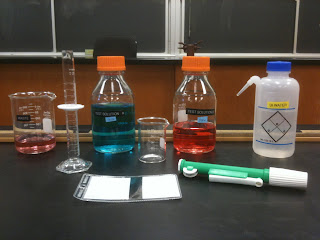The last week of official labs for this course centered around the student made presentations on invasive species. After a fifteen-minute quiz, the teaching assistant and I moved to the back of the classroom and allowed the groups to present their findings on the species they chose. Presentations provided the region that was invaded, damages done by the species, and control attempts for the species.
Presentations proved to be an interesting way of dividing up a subject into parts for groups to learn and discover on their own. Then when the groups present, the rest of the students have a chance to learn what other groups learned. Each group had an out of the ordinary point to make, which allowed for the invasive species being presented to provide an interesting subject for listening.
Essentially group presentations can be assigned to help promote public speaking, teamwork, and to push students to look up more information on their own rather than from just the workbook. It is another of the wide variety of tools the instructor has to educate students in nonstandard ways. Presenting information in full and answering questions at the end of their presentation ends up ensuring that if the student did not look up all he or she could have about their species, than the lack of information will definitely be noticed. The only thing that could be improved about this lab is changing the guidelines for the presentations to only include videos that contain specific pictures or actions the species performs. Many of the groups instead had videos explain their species, when the group itself could have easily summarized the video. To help with finding information on invasive species for future students, they could try going to these sites to find information on invasive species and their effects on environments.
http://www.invasivespeciesinfo.gov/index.shtml and http://www.invasive.org/


























